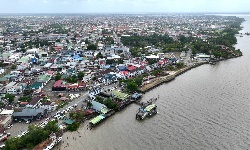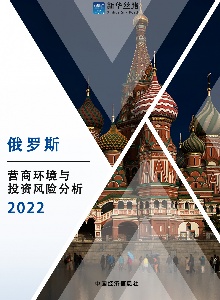(This text material is for reference only.)
Ordos might be a frontier tourist town butits fascinating mix of deserts, grasslands, history and culture makes it anideal destination for the adventurous traveler. Jules Quartly reports
Most visitors to Ordos are domesticbusinessmen or migrant laborers. International travelers taking a stroll aroundthe sites will likely be asked for a photo by some curious local who will sayyou are the first foreign face they have seen.
But this parochial vision is changing andthe city government is welcoming visitors with open arms, as evidenced by theaddition of a new terminal being built at the airport, its hosting of therecent Nadam Games and the Miss World contestants in October.
Ordos is a Mongolian word meaning"numerous palaces" and is one corner of the economic zone known asthe "Golden Triangle" of cities in Inner Mongolia autonomous regionthat includes Baotou and Hohhot.
It is one of the cradles of civilizationthat dates back at least 50,000 years to "Ordos Man", named by theFrench Jesuit and geologist Father Emile Licent in 1922, after he found apetrified tooth from one of these early settlers. The area is also an importantsource of fossil finds.
The Ordos Museum in Dongsheng district isas good a place as any to begin your journey of discovery and become acquaintedwith the area's ancient peoples, a mix of Mongoloid, Europoid and Hanethnicities.
The museum has a world famous collection ofbronze ware dating back 2,700 years and an exhibition on the ground floor thathighlights the development of Ordos over the past 30 years breathlesslysuggests an era of unprecedented change.
Step outside the museum and you willexperience the fruits of this new prosperity: busy streets, shiny new malls andhalf of the city under construction.
While buying cashmere products on TextileStreet and a wander around the new public square, festooned with neon andsurrounded by impressive new buildings, is worthwhile, transport is required tovisit most of the city's 40 official outstanding tourist attractions.
They are grouped under the ratherunpromising title of "five districts, two lines and one center" -which refers to the Genghis Khan mausoleum, Kubuqi desert, grassland culture,"Ordos Man" finds, and east Ordos. The lines are railway connectionsto Beijing and Xi'an, Shaanxi province. The center is "Ordos excellenttourist city".
Midway between Ordos and Baotou is SingingSands Ravine, part of the Kubuqi desert, and with enough sand to please an armyof children. Its 100-meter-tall dunes offer an orchestra of sounds, created bythe wind on hot, dry days. Visitors report hearing singing, wind instrumentsand even the roar of cars and planes, while I heard loud booms and whistles.
There are scaling ladders for theadventurous and a cableway for those who are not. Activities include ropeways,sand skating, riding camels and buggies, making sand sculptures and even paragliding.
It's a good idea to stick around for thesunrise, which can be spectacular. There is also the option of staying in atraditional Mongolian yurt, sitting around a campfire and enjoying atraditional song-and-dance performance called the "Ordos Wedding".
A trip to the Mausoleum of Genghis Khanwill naturally lead you to vast swathes of scenic grasslands, like a horse towater. I serendipitously discovered the village of Chengling after getting lostand following a tree-lined avenue for 10 km or so.
The smell of horse dung and barbecued meatwas the first sign of civilization and it turned out to be a hive oftraditional Mongolian activities. This included practicing archery skills and,of course, riding the world-renowned Mongolian horses.
You can stay overnight in a yurt and sampletraditional fare. This principally means meat, more meat, and dairy products.Barbecued lamb is a specialty and coated in myriad spices, depending on thelocality.
Hotpots may confound some foreigners,unused to dipping raw meats, seafood and vegetables in a flavorsome broth, butthey are healthy and tasty. The Mongolian version of the hotpot is less spicythan in central China and has an almost medicinal flavor - traditional Chinesemedicine, that is.
When it comes to drink, the local whiteliquor is strong but smooth, while a cup of milk tea has salt and a knob ofbutter, rather than sugar.
If you have had enough of yurts andidentikit hotels, check out a huiguan, which roughly translated means guild, ormeeting place for locals.
In Ordos, families and businessmen like tounwind after a meal with a swim or hot bath, sauna and massage in a huiguan.There is also the option of staying overnight in a communal TV room, or aprivate room for about 120 yuan ($18). It's generally a wholesome and novelexperience, but it should be added some huiguan are more wholesome than others.












